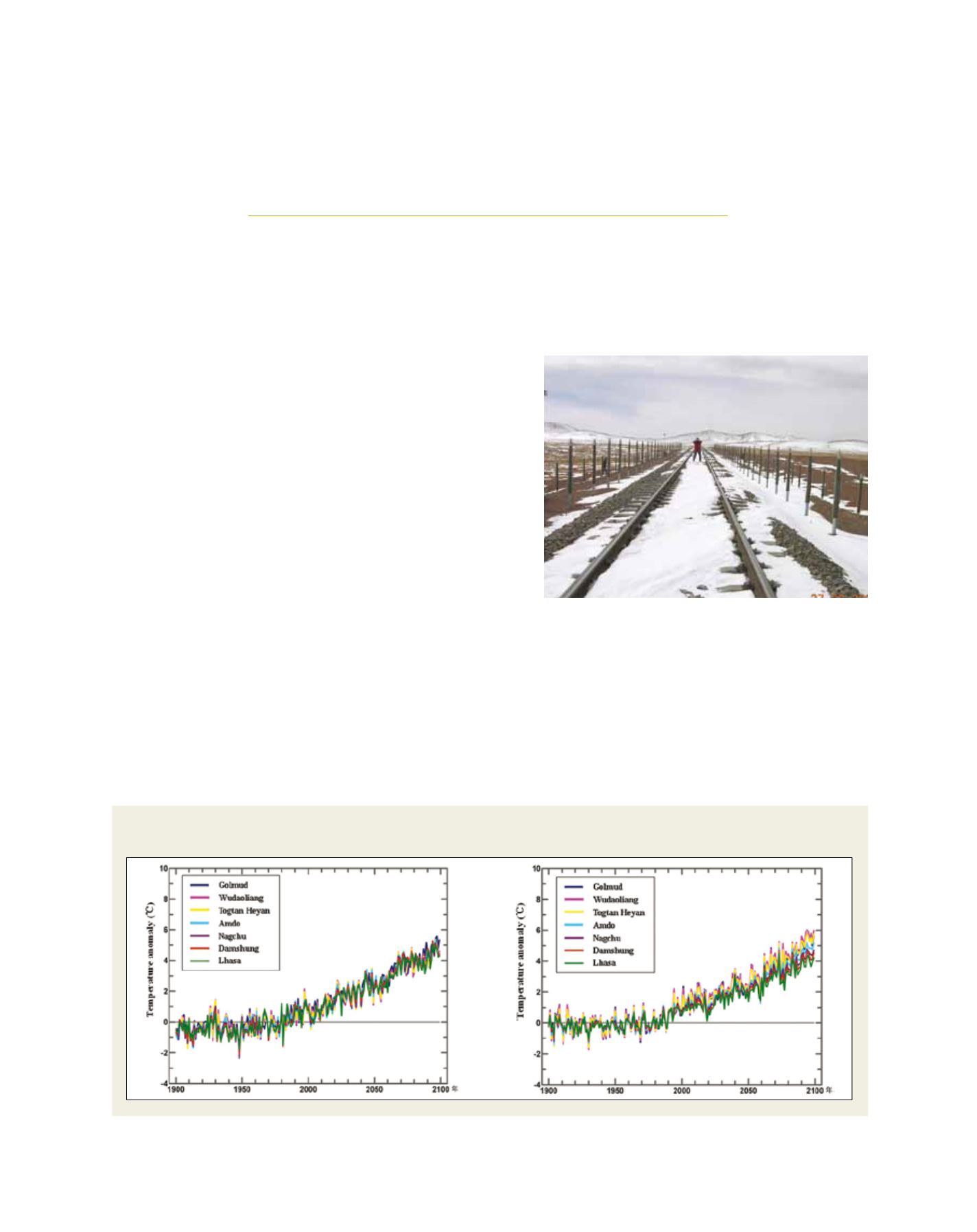

[
] 180
Climate services for large
engineering projects in China
Song Lianchun, Chao Qingchen, Zhou Botao, Xu Hongmei, Chen Xianyan, Xu Ying
Beijing Climate Center, China Meteorological Administration
L
arge engineering projects are extremely sensitive to envi-
ronment, especially to climate change and extreme events.
Climate factors have been key influences on the secure
design, investment cost and operational profit of engineering
projects. Climate change can alter the current status of water
cycle and energy balance, which in turn results in the change
in the theoretical functional relationship of historical data that
the engineering design is based on, thereby affecting the design
and operational management of the project and the life of the
building materials. Moreover, the intensity of extreme climate
events and probabilistic risks has also become an important
factor restricting the construction of large engineering projects.
Thus, the following are very helpful in promoting the climate adap-
tion of large engineering projects:
• Objectively assessing climate demands during the design,
construction and operational management of the project
• Strengthening tailored climate monitoring, impact assessment
and projection
• Providing effective climate information.
Qinghai-Tibet railway project
The Qinghai-Tibet railway begins in Xining, Qinghai Province in the
north and passes through Golmud before ending in Lhasa, in the
Tibet Autonomous Region. It spans about 1,956 km with
a permafrost length of 632 km, of which continuous
permafrost is about 550 km in length and 82 km is island
discontinuous permafrost.
Permafrost is the foremost challenge facedby theQinghai-
Tibet railway construction project. Most of the permafrost
on the Qinghai-Tibet plateau is warm permafrost which is
T
ransport
and
I
nfrastructure
Source: CMA
Changes in the lowest winter temperature (left) and the highest summer temperature (right) over the stations
along the Qinghai-Tibet railway
Image: Qinghai Meteorological Bureau
Adverse impacts of snow cover on the normal railway transport
















